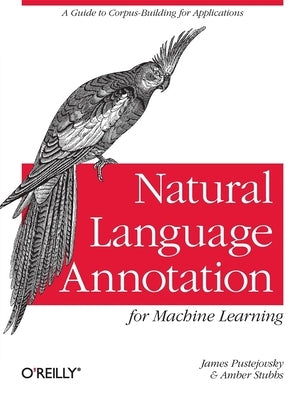Description
Create your own natural language training corpus for machine learning. Whether you're working with English, Chinese, or any other natural language, this hands-on book guides you through a proven annotation development cycle--the process of adding metadata to your training corpus to help ML algorithms work more efficiently. You don't need any programming or linguistics experience to get started.
Using detailed examples at every step, you'll learn how the MATTER Annotation Development Process helps you Model, Annotate, Train, Test, Evaluate, and Revise your training corpus. You also get a complete walkthrough of a real-world annotation project.
- Define a clear annotation goal before collecting your dataset (corpus)
- Learn tools for analyzing the linguistic content of your corpus
- Build a model and specification for your annotation project
- Examine the different annotation formats, from basic XML to the Linguistic Annotation Framework
- Create a gold standard corpus that can be used to train and test ML algorithms
- Select the ML algorithms that will process your annotated data
- Evaluate the test results and revise your annotation task
- Learn how to use lightweight software for annotating texts and adjudicating the annotations
This book is a perfect companion to O'Reilly's Natural Language Processing with Python.
Author: James Pustejovsky, Amber Stubbs
Publisher: O'Reilly Media
Published: 11/20/2012
Pages: 342
Binding Type: Paperback
Weight: 1.21lbs
Size: 9.01h x 7.07w x 0.73d
ISBN13: 9781449306663
ISBN10: 1449306667
BISAC Categories:
- Computers | Data Science | Data Modeling & Design
- Computers | Artificial Intelligence | Natural Language Processing
About the Author
James Pustejovsky teaches and does research in Artificial Intelligence and Computational Linguistics in the Computer Science Department at Brandeis University. His main areas of interest include: lexical meaning, computational semantics, temporal and spatial reasoning, and corpus linguistics. He is active in the development of standards for interoperability between language processing applications, and lead the creation of the recently adopted ISO standard for time annotation, ISO-TimeML. He is currently heading the development of a standard for annotating spatial information in language. More information on publications and research activities can be found at his webpage: pusto.com.
Amber Stubbs recently completed her Ph.D. in Computer Science at Brandeis University, and is currently a Postdoctoral Associate at SUNY Albany. Her dissertation focused on creating an annotation methodology to aid in extracting high-level information from natural language files, particularly biomedical texts. Her website can be found at http: //pages.cs.brandeis.edu/ astubbs/

